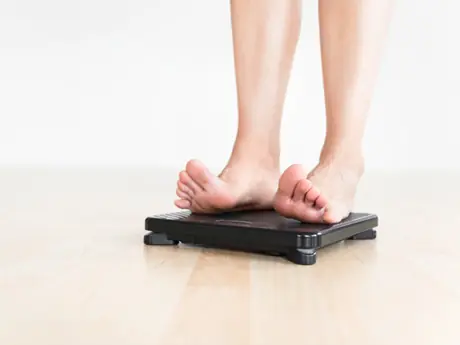
For years, dieters have been conditioned to rely on the number displayed on the scale as a universal indicator of their health, fitness and physical appeal. Is this number a valid measurement of fitness? What numbers should dieters pay attention to? Weight? Body measurements? Caloric intake?
While measurement is certainly used to monitor several health indicators, total fitness is a complex and multi-faceted phenomenon and cannot be summarized in one number.
More: Calculate your Body Fat Percentage.
Here is the inside scoop on three popular forms of measuring dietary and fitness progress:
1. Scale
The scale measures your body weight, or how light you are—it does not measure how fit you are. Your body weight measured by the scale is a one-dimensional measurement of your body because your weight in pounds does not take into account your fitness level or body composition.In other words, the scale has no way of deciphering how much of your weight is body fat versus lean muscle mass. Note that muscle volume is denser than fat volume, and therefore heavier. So, when the body builds muscle mass and decreases body fat, the scale may reflect an increasing weight, while the percentage of body fat is actually decreasing. In this scenario, you may look better and feel better because you have lost fat and gained muscle mass, but your weight has increased on the scale.
While the scale may not reflect your fitness success, conversely, the scale could be falsely encouraging. For instance, did your weight drop by 5 pounds immediately after that grueling spin class? This isn't truly lost fat—it is just water weight from sweat. These two opposing scenarios reveal that body weight measured on a scale is limited and does not flawlessly capture total fitness.
More: Why You Should Step Off the Scale
2. Body Circumference
A second number that many dieters monitor is body measurements, such as waist and hip circumference. The benefit of observing body measurements is that this indicator accounts for the different densities of muscle and fat—which addresses the limitation of the scale.For example, if your weight remains stagnant, but your body measurements decrease, you can conclude you have lost body fat but gained muscle (since muscle is denser and thus heavier than fat). An inexpensive way to determine if you are losing body fat is to take your measurements weekly at the same time per day and keep a record of the results.
Although the body measurement approach considers body composition, this exercise isn't perfect either. Taking body dimensions may take time to show results, are subject to human error, and could lead to obsessive measuring and re-measuring to ensure you didn't wrongly include an extra millimeter to your left thigh.
More: 5 Ways to Test Your Body Composition
3. Calories
Another number that dieters may monitor is caloric intake. Ultimately, weight loss occurs when calories out exceed calories in. If your goal is to lose weight, calorie counting can be an effective form of measuring your dietary performance. Furthermore, if tracked honestly it can be enlightening to analyze your historical eating patterns—How much? When? Why?While calorie counting can objectively predict weight loss and can identify dietary trends, this method is probably unsustainable in the long term. It is unlikely that you will faithfully log every Tic Tac consumed to your food journal for the rest of your life.
More: Weight Loss 101: How to Calculate a Calorie Deficit
Clearly, these three approaches to measuring fitness are not flawless. Instead, aspire to adopt a more holistic approach to assessing your health by paying attention to changes in energy, endurance and self-esteem.
Healthy bodies come in varying weights, circumferences and caloric needs. Aim to evaluate your fitness progression with indicators that can't be measured—how your clothes fit and how you feel about yourself. Sometimes, the things that count can't be counted.
More: Weight Loss: 4 Steps to Success
 Stay in shape in a fitness class.
Stay in shape in a fitness class.
About the Author

Get ACTIVE on the Go


Couch to 5K®
The best way to get new runners off the couch and across the finish line of their first 5K.
Available for iOS | Android







Discuss This Article